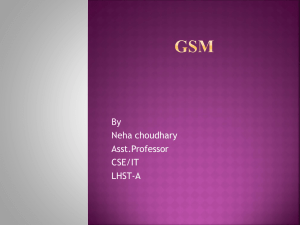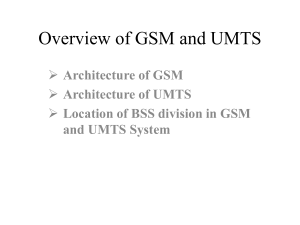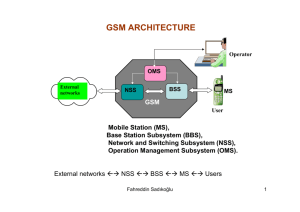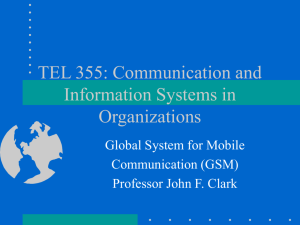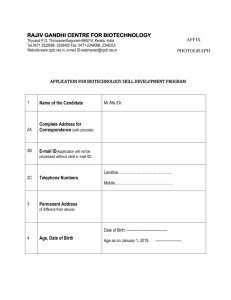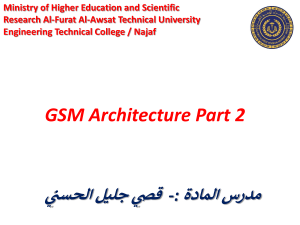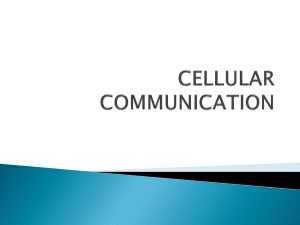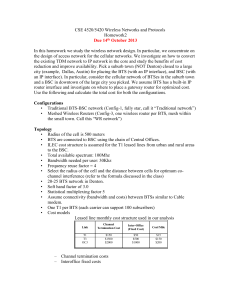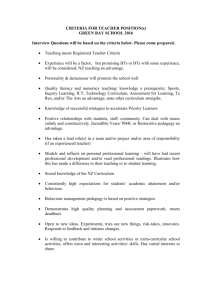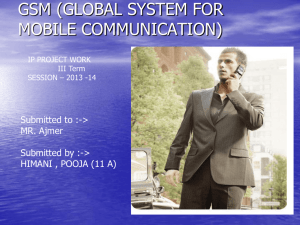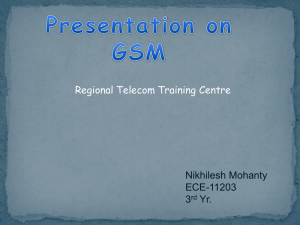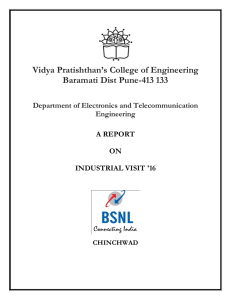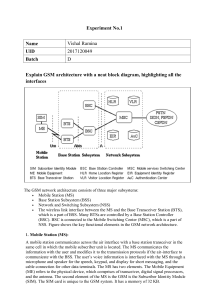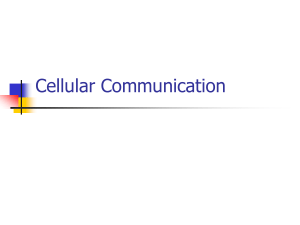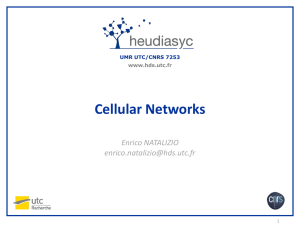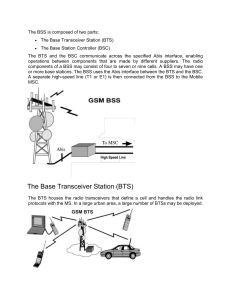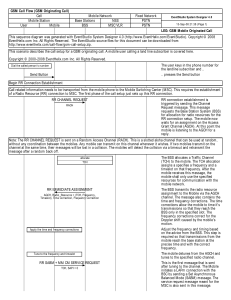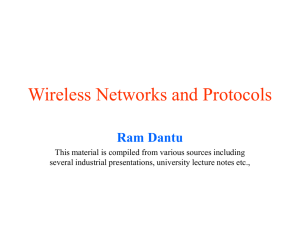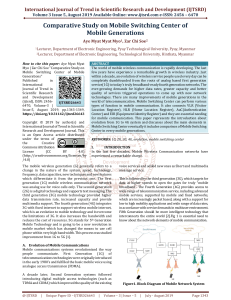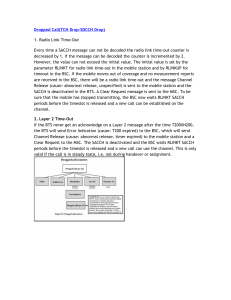GSM
advertisement
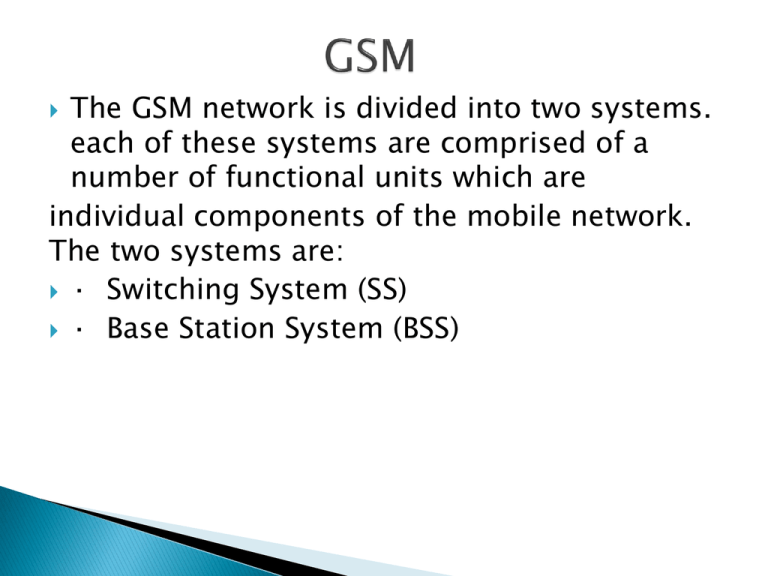
The GSM network is divided into two systems. each of these systems are comprised of a number of functional units which are individual components of the mobile network. The two systems are: · Switching System (SS) · Base Station System (BSS) NSS is the core element of network switching which interfaces with subscriber services for voice and data. NSS Main components are: ◦ ◦ ◦ ◦ ◦ Mobile Switching Centre (MSC) Home Location Register (HLR) Visitor Location Register (VLR) Equipment Identification Register (EIR) Authentication Centre (AUC) The BSS performs all the radio-related functions. The BSS is comprised of the following functional units: · Base Station Controller (BSC) · Base Transceiver Station (BTS) The OMC performs all the operation and maintenance tasks for the network such as monitoring network traffic and network alarms. The OMC has access to both the SS and the BSS. The MSC performs the telephony switching functions for the mobile network. It controls calls to and from other telephony and data systems, such as the Public Switched Telephone Network (PSTN), Integrated Services Digital Network (ISDN),public data networks, private networks and other mobile networks. Gateway functionality enables an MSC to interrogate a network’s HLR in order to route a call to a Mobile Station (MS).Such an MSC is called a Gateway MSC (GMSC). For example, if a person connected to the PSTN wants to make a call to a GSM mobile subscriber, then the PSTN exchange will access the GSM network by first connecting the call to a GMSC. The same is true of a call from an MS to another MS. Any MSC in the mobile network can function as a gateway by integration of the appropriate software. The HLR is a centralized network database that stores and manages all mobile subscriptions belonging to a specific operator. Subscriber identity · Subscriber supplementary services · Subscriber location information · Subscriber authentication information Visitor Location Register - VLR stores all subscriber information in its coverage area and provides call setup conditions for the registered mobile subscribers As a dynamic database, VLR must exchange large volume of data with HLR to ensure data validity. When an MS leaves the controlling area of a VLR, it registers in another VLR. The original VLR deletes the temporary records of that subscriber VLR integrated within MSC. The main function of the AUC is to authenticate the subscribers attempting to use a network. In this way, it is used to protect network operators against fraud. The AUC is a database connected to the HLR which provides it with the authentication parameters and ciphering keys used to ensure network security. Equipment Identification Register - EIR stores the parameters related to MS. It can identify, monitor, and block the MS. EIR preventing unauthorized MS from accessing the network Base Station Subsystem BSS serves as a bridge between NSS and MS. It performs radio channel management and wireless reception and transmission Base Station Controller (BSC) and Base Transceiver Station (BTS) are main components of BSS Base Station Controller - Located between MSC and BTS, it controls and manages more than one BTS It performs radio channel assignments BTS and MS transmit power control, and intercell handover BSC is also small a switch that converge and connects local network with the MSC through A interface Abis interface connects BTS to BSC Base Transceiver Station - BTS is wireless transceiving equipment controlled by the BSC in BSS. BTS carries radio transmission It performs wired-related wireless conversion, radio diversity, radio channel encryption, and hopping Um interface connects BTS to MS. GSM Network 3
